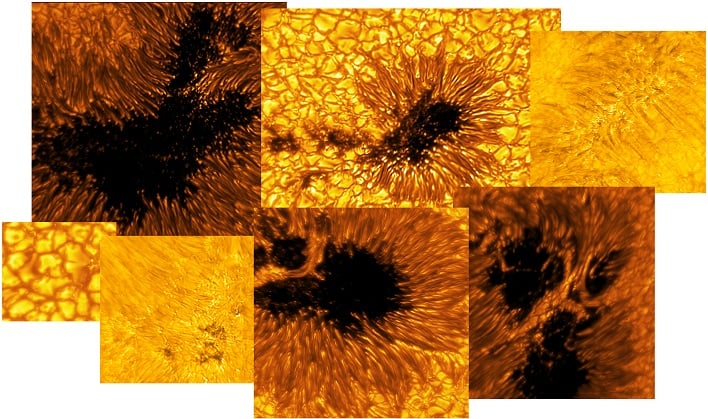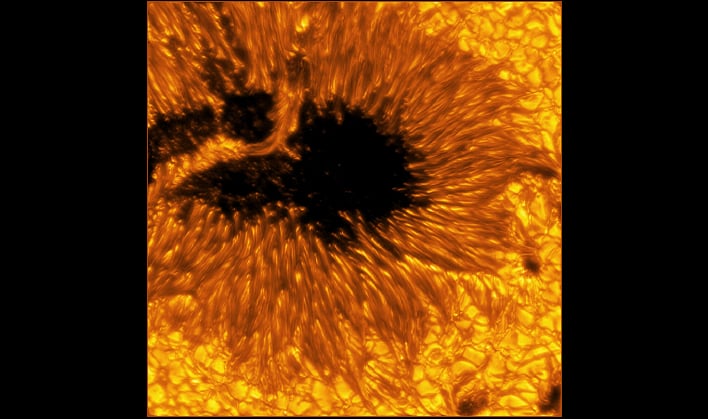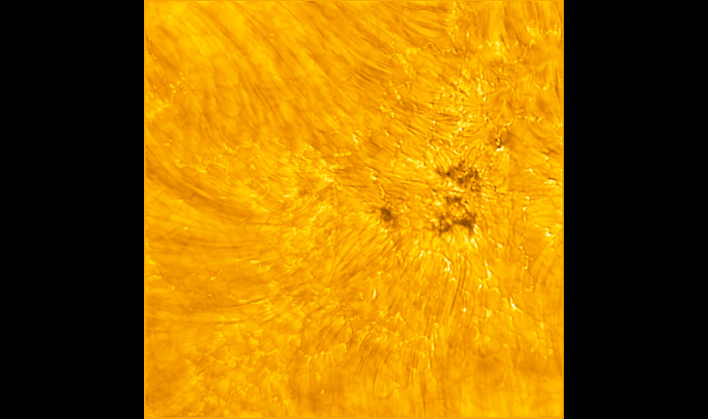Solar Telescope Snaps Stunning Closeups Of The Sun As You've Never Seen It Before

A mosaic of eight images was released, previewing solar data that was taken during the telescope's first year of operation. The telescope is still in its learning and transitioning period, in which it is slowly brought up to its full operational capability. Solar scientists are able to utilize the telescope's unique ability to capture data in never before seen detail to better understand the Sun's magnetic field and drivers behind solar storms, according to a press release.
The images taken of the sunspots feature regions of the Sun's surface that are cool and dark, also known as the photosphere. While sunspots vary in size, many are often roughly the size of Earth or larger. Groups of sunspots can be the source of flares and coronal mass ejections that produce solar storms. As these storms are released from the outer layer of the Sun, the heliosphere, they have the potential to disrupt critical infrastructure here on Earth, such as radio communication and power grids.
Images of the quiet and peaceful regions of the Sun showcase convection cells in the photosphere that display "a bright pattern of hot, upward-flowing plasma surrounded by darker lanes of cooler, down-flowing solar plasma." Dark and elongated fibrils can be seen originating from areas of small-scale magnetic field accumulations as well.
The new information collected from the Inouye Solar Telescope will most likely be used in comparison to data collected from NASA's Parker Solar Probe mission and the Solar Dynamics Observatory (SDO). The Parker Solar Probe spacecraft uses Venus' gravity in order to do flybys of the Sun, approaching the Sun's atmosphere as close as 3.8 million miles to the star's surface. This is well within the orbit of Mercury and more than seven times closer than any other spacecraft has ever come before.
The newly released images only make up a tiny fraction of the data that has been collected by the solar telescope to date. The Inouye Solar Telescope's Data Center continues to calibrate and deliver data to the scientists and the public, with more new and scintillating results expected in the future.



